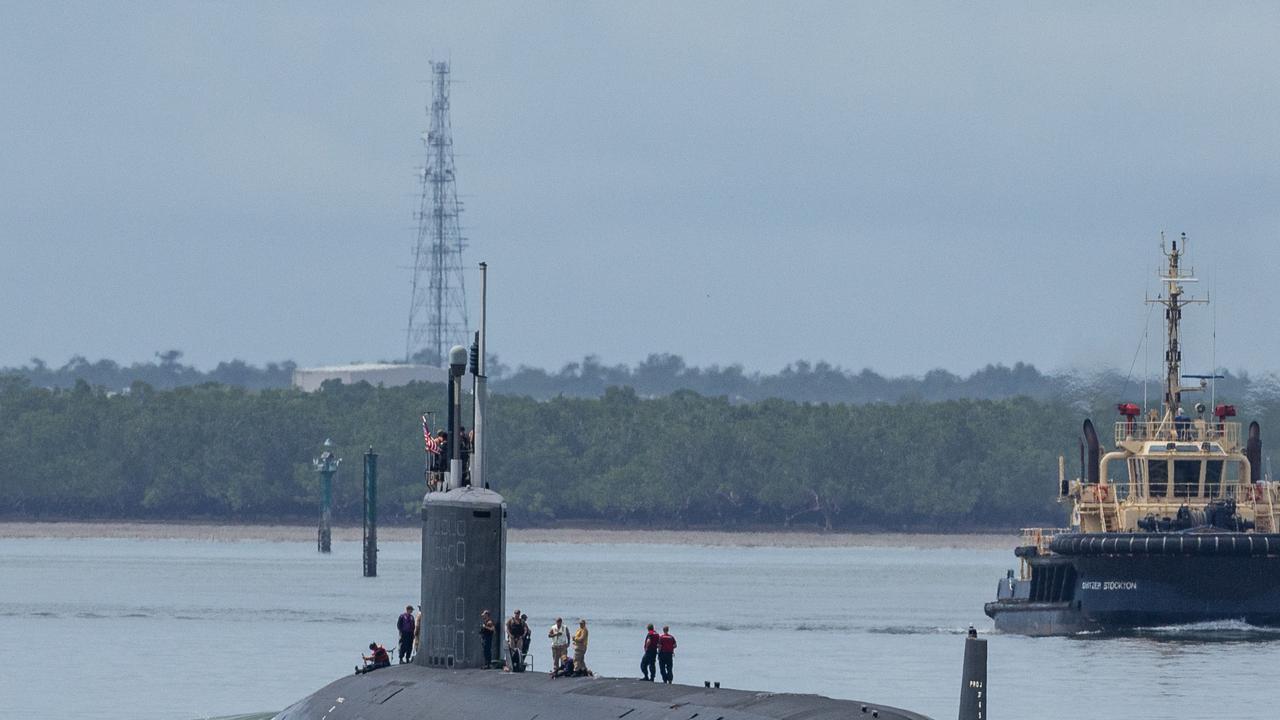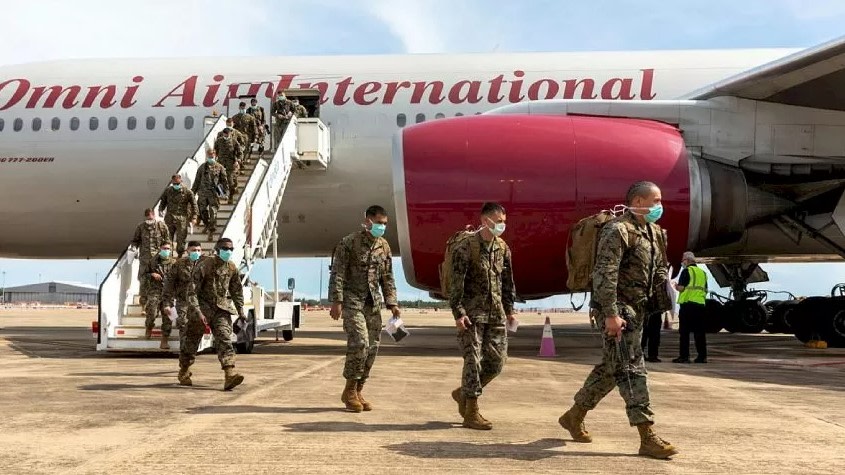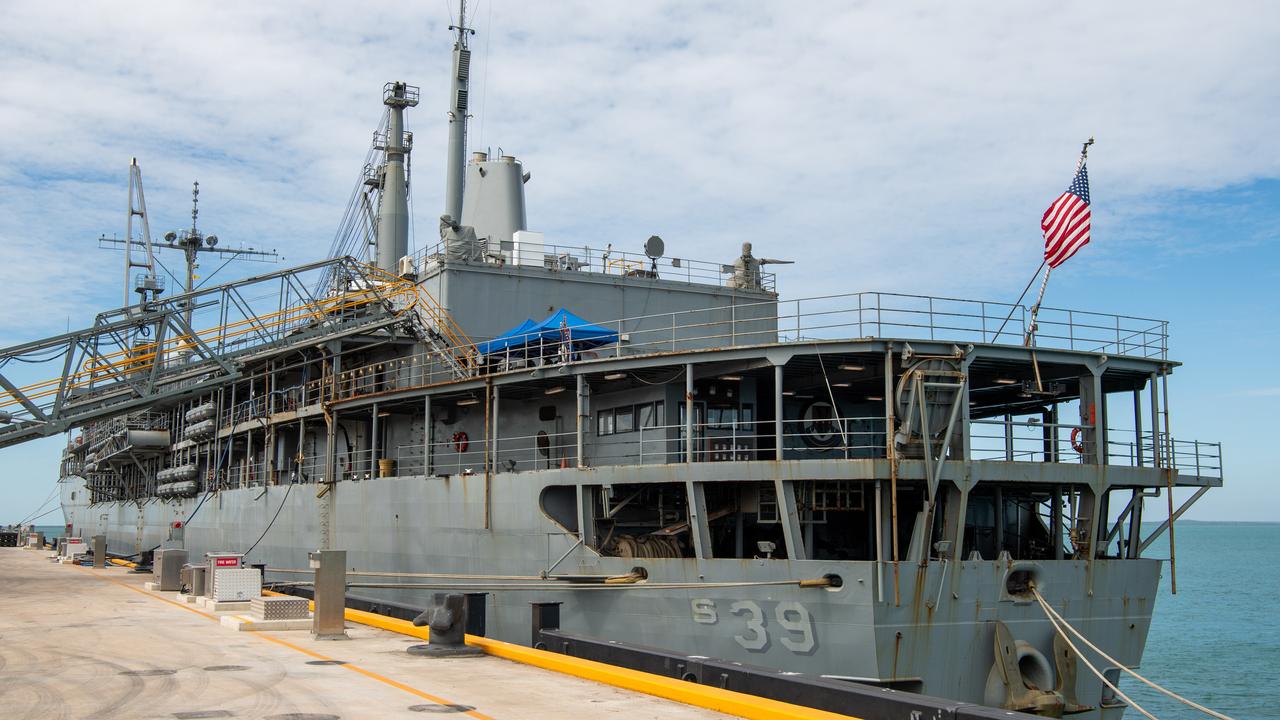
A US nuclear-powered submarine has pulled into Darwin Harbour, with authorities keeping the high-value vessel under close wraps from the public eye.
On Thursday morning, the USS Minnesota, escorted by a couple of tug boats, was seen passing through Darwin Harbour towards East Arm.
It is understood the USS Minnesota cruised to northern Australia directly from Perth, where it was docked at HMAS Stirling last month.
Last week, the NT Government issued a ‘notice to mariners’, warning local boaties the waters surrounding East Arm Wharf would be closed due to a joint US navy and ADF operation which runs until April 3.




